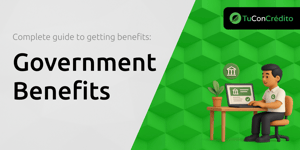Impulse spending can feel exhilarating in the moment but burdensome afterward. Nearly every shopper experiences it, yet few recognize the patterns fueling their unplanned decisions. In this article, we explore the root causes of impulsive buys, examine who is most vulnerable, and present research-backed strategies to reclaim control of your finances. By understanding the science, social dynamics, and retail tactics at play, you’ll learn to build resilient habits against emotional urges and steer your wallet toward lasting security.
What Is Impulse Spending?
Impulse spending refers to those unplanned purchases triggered by an emotional response or external prompt. Studies show that almost 89% of shoppers have engaged in impulse buying, with Americans averaging 9.75 impulse buys and $281.75 spent per month in 2024. While the total annual spend topped $71 billion in 2022, a notable 51.9% decline emerged by 2023 as consumers became more financially vigilant.
This phenomenon spans generations and income levels. Millennials and Gen Z lead the pack—47% of each group reporting at least one impulse purchase in the last three months. High-income individuals and parents also rank above average in impulsive habits, illustrating that unexpected spending knows no single demographic boundary.
Who Is Most Vulnerable?
The susceptibility to impulse spending correlates with emotional state, social influence, and platform exposure. Brick-and-mortar stores capture 80% of impulsive transactions, while 72% of online shoppers admit to unplanned buys spurred by discounts. Social media amplifies this effect—Millennials gravitate toward Facebook, Gen Z leans on TikTok, and both groups secondarily use Instagram for shoppable posts.
Parents juggling responsibilities often seek quick mood lifts, and high earners may feel entitled to occasional splurges. Individuals experiencing stress or boredom are likewise at risk, as shopping can offer an immediate dopamine boost to counteract negative feelings.
Why We Impulse Buy
At the heart of impulsive purchases lies psychology. The brain’s reward pathways release dopamine when we anticipate or receive a new product, creating a cycle of instant gratification and fleeting satisfaction. Retailers exploit this with one-click purchasing and flash sales, minimizing the friction between desire and action.
Emotional states such as anxiety, stress, or loneliness can heighten our need for quick relief. Shopping serves as a coping mechanism—an accessible remedy to boredom or tension. Once the initial thrill fades, however, regret and guilt often follow, eroding self-confidence and financial stability.
How Retailers Fuel the Urge
Retailers and platforms deploy sophisticated tactics to stoke impulse spending. They leverage social proof, scarcity, and urgency to make us feel we must act now or miss out. Common strategies include:
- "Limited time offers" and countdown timers to trigger fear of missing out.
- Strategic product placement at checkouts or homepages to capture attention.
- Personalized recommendations and curated ads based on browsing history.
- Influencer endorsements and peer comparisons showcased in shoppable posts.
These tactics create a low-resistance path to purchase. A single click or a whispered prompt on social media can override careful consideration, rapidly draining bank accounts.
Strategies to Curb Impulse Spending
Breaking free from impulsive habits requires intentional effort and accountability. Implement these proven techniques to foster mindful spending:
- Pause and reflect: Before purchasing, ask, “Do I need this?” and “Can I afford it?”
- Adopt the 24-hour rule: Wait a day before committing to non-essential buys.
- Create and maintain a shopping list: Digital or paper lists minimize ambiguity.
- Use budgeting apps: Track expenses in real time to stay aligned with goals.
- Recognize triggers: Develop alternative coping activities like walking or journaling.
By embedding small pauses and technology-driven checkpoints into your routine, you introduce friction that deters impulsive clicks and unplanned visits to the mall.
Building Lasting Financial Confidence
True empowerment comes when you shift from reactive to proactive financial behavior. Begin by setting clear priorities—emergency savings, debt reduction, or investment goals. Each time you resist an impulse, you reinforce your commitment to these broader objectives.
Behavioral economists emphasize the value of public accountability and gamification. Share your spending goals with a trusted friend or join online communities dedicated to personal finance. Turning budgeting into a challenge, complete with rewards for achievements, can make restraint feel rewarding rather than restrictive.
Expert Insights and Real-World Applications
Economists and consumer psychologists agree that impulse spending endures because it satisfies deep-wired needs for instant pleasure. Dr. Jane Thompson, a behavioral finance researcher, notes that “understanding one’s own emotional triggers is as important as any budgeting tool.” When negative emotions arise, substitute a walk or a conversational check-in with a friend for the immediate high of a purchase.
Successful planners often automate their finances—scheduling savings transfers and automating bill payments to neutralize decision-making fatigue. This reduces the mental load, leaving fewer opportunities for impulsive deviations.
Embrace Mindful, Purpose-Driven Spending
You have the power to rewrite your financial story. By acknowledging the deep-rooted drivers of impulsive spending, resisting manipulative retail tactics, and deploying strategic interventions, you can transform erratic behavior into a pathway toward security and growth.
Remember, every dollar you choose to save or invest rather than squander is a vote for your future self. Cultivate self-awareness, harness practical tools, and celebrate each victory—no matter how small. In time, these choices will compound into a lasting legacy of confidence in your financial future and peace of mind that transcends momentary desires.
References
- https://capitaloneshopping.com/research/impulse-buying-statistics/
- https://www.invespcro.com/blog/impulse-buying/
- https://www.pymnts.com/consumer-insights/2025/walking-the-pocketbook-tightrope-how-consumers-are-balancing-uncertainty-and-spending/
- https://explodingtopics.com/blog/gen-z-spending
- https://fitsmallbusiness.com/impulse-buying-statistics/
- https://ikanabusinessreview.com/2024/11/the-secret-psychology-behind-impulse-buying/
- https://www.bankrate.com/banking/savings/ways-to-avoid-impulse-buying/
- https://thedaily.case.edu/why-is-impulse-spending-so-tempting-cwru-economics-professor-sining-wang-weighs-in/










